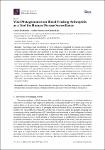Viral Metagenomics on Blood-Feeding Arthropods as a Tool for Human Disease Surveillance
Brinkmann, Annika
Nitsche, Andreas
Kohl, Claudia
Surveillance and monitoring of viral pathogens circulating in humans and wildlife, together with the identification of emerging infectious diseases (EIDs), are critical for the prediction of future disease outbreaks and epidemics at an early stage. It is advisable to sample a broad range of vertebrates and invertebrates at different temporospatial levels on a regular basis to detect possible candidate viruses at their natural source. However, virus surveillance systems can be expensive, costly in terms of finances and resources and inadequate for sampling sufficient numbers of different host species over space and time. Recent publications have presented the concept of a new virus surveillance system, coining the terms “flying biological syringes”, “xenosurveillance” and “vector-enabled metagenomics”. According to these novel and promising surveillance approaches, viral metagenomics on engorged mosquitoes might reflect the viral diversity of numerous mammals, birds and humans, combined in the mosquitoes’ blood meal during feeding on the host. In this review article, we summarize the literature on vector-enabled metagenomics (VEM) techniques and its application in disease surveillance in humans. Furthermore, we highlight the combination of VEM and “invertebrate-derived DNA” (iDNA) analysis to identify the host DNA within the mosquito midgut.
Dateien zu dieser Publikation
Keine Lizenzangabe

